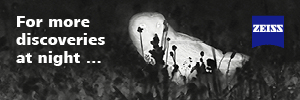| This article is incomplete. This article is missing one or more sections. You can help the BirdForum Opus by expanding it. |
Overview
In the south-eastern corner of Portugal the River Guadiana forms the border with Spain and close to where it enters the sea an extensive area of wetlands, saltpans and saltmarsh has been created that is one of the best birding areas in southern Portugal.
The waters of this estuary are very rich in invertebrates and provide food for a wide variety of breeding, passage and wintering wetland birds.
In addition there are areas of rough pasture, scrub and pine-covered dunes. A large part of the area is covered by the Reserva Natural do Sapal de Castro Marim e Vila Real de Santo Antonio.
Birds
Notable Species
Kentish Plover, Black-winged Stilt and Pied Avocet are all common in the breeding season, White Stork nest in low trees in the area, Little Bustard and Collared Pratincole can be seen and there are six breeding larks including Mediterranean Short-toed Lark which breeds virtually nowhere else in the country. Spanish Wagtail is a common breeding bird. Audouin's Gull bred here for the first time in 2001, the first record for Portugal.
The scrub and woodlands around Castro Marim are home to Hoopoe and Short-toed Treecreeper, Iberian Magpie, Iberian Grey Shrike, Woodchat Shrike and Rufous-tailed Scrub Robin. Red-necked Nightjar breeds in the pinewoods.
Passage periods bring a wide range of birds with Greater Flamingo and Eurasian Spoonbill frequent visitors, waders from stints to godwits with fairly regular Marsh Sandpiper, Caspian Tern, Gull-billed Tern and marsh terns and raptors such as Booted Eagle, Short-toed Eagle and Griffon Vulture. Balearic Shearwater and Cory's Shearwater are common offshore during passage periods and Little Gull and Audouin's Gull occur on passage. Passerine migrants include regular Red-throated Pipit and Ortolan Bunting.
Winters are generally mild with White Stork and Greater Flamingo often present all year, and the lagoons and saltpans attract large numbers of waders. Colder weather tends to bring waterfowl, mainly dabbling ducks but also Common Pochard, grebes and Eurasian Coot.
Check-list
Birds you can see here include:
Black-necked Grebe, Cory's Shearwater, Balearic Shearwater, Northern Gannet, Great Cormorant, Little Bittern, Black-crowned Night Heron, Squacco Heron, Western Cattle Egret, Little Egret, Purple Heron, Black Stork, White Stork, Glossy Ibis, Eurasian Spoonbill, Greater Flamingo, Gadwall, Common Teal, Mallard, Northern Pintail, Garganey, Northern Shoveler, Red-crested Pochard, Common Pochard, Black Kite, Griffon Vulture, Short-toed Eagle, Western Marsh Harrier, Hen Harrier, Montagu's Harrier, Booted Eagle, Bonelli's Eagle, Osprey, Merlin, Common Moorhen, Eurasian Coot, Little Bustard, Black-winged Stilt, Pied Avocet, Stone-curlew, Collared Pratincole, Kentish Plover, Northern Lapwing, Little Stint, Temminck's Stint, Curlew Sandpiper, Ruff, Common Snipe, Black-tailed Godwit, Spotted Redshank, Common Redshank, Marsh Sandpiper, Common Greenshank, Green Sandpiper, Wood Sandpiper, Arctic Skua, Mediterranean Gull, Little Gull, Slender-billed Gull, Audouin's Gull, Lesser Black-backed Gull, Gull-billed Tern, Caspian Tern, Little Tern, (rare W), Whiskered Tern, Black Tern, Great Spotted Cuckoo, European Turtle Dove, Little Owl, Short-eared Owl, Red-necked Nightjar, Pallid Swift, European Bee-eater, European Roller, Eurasian Hoopoe, (rare W), Eurasian Wryneck, Calandra Lark, Greater Short-toed Lark, Mediterranean Short-toed Lark, Crested Lark, Thekla Lark, Woodlark, Eurasian Skylark, Sand Martin, Barn Swallow, Red-rumped Swallow, Tawny Pipit, Water Pipit, Red-throated Pipit, Blue-headed Wagtail, Rufous Scrub Robin, Common Nightingale, Bluethroat, Black Redstart, Northern Wheatear, Western Black-eared Wheatear, Great Reed Warbler, Melodious Warbler, Dartford Warbler, Spectacled Warbler, European Pied Flycatcher, Long-tailed Tit, Short-toed Treecreeper, Penduline Tit, Eurasian Golden Oriole, Iberian Grey Shrike, Woodchat Shrike, Iberian Magpie, European Serin, Ortolan Bunting
Other Wildlife
To do
Site Information
History and Use
To do
Areas of Interest
There are several areas of particular note around Castro Marim with a good wader spot at the disused saltpans between the village and the river.
The area between the saltpans and the bridge over the river is excellent for Stone-curlew, Little Bustard and larks.
The N122 between Castro Marim and Vila Real has good birding on either side but particularly to the west. A track heading west off this road leads to the Carrasqueira, a stream which joins the Guadiana, and flows through rough pasture and scrub with pools and saltpans with an excellent variety of birds, particularly during migration periods.
Banco do O'Brill, the breakwater at the mouth of the Guadiana, is good for gulls and terns, sometimes skuas and shearwaters.
Access and Facilities
Castro Marim lies on the western bank of the Guadiana and can be reached by road from Faro on the IP1 and turning south on the N122 just before the river and the Spanish border. The N122 continues through Castro Marim to Vila Real de Santo Antonio closer to the sea where accommodation is plentiful.
West of Vila Real is Monte Gordo which also has hotels and a campsite.
Contact Details
To do
External Links
Content and images originally posted by Steve
Reviews
stuffreviewer's review
Was there late march this year, very few birds about. May have just been unlucky. Some Black-winged stilts near the entrance, a couple of Storks in the distance, a group of Herring Gulls, that was it. Combined with the boring salt-pan landscape it was a dispiriting experience.
Pros
- Castro Marim nearby is an interesting town
Cons
- Few birds
- muddy tracks



